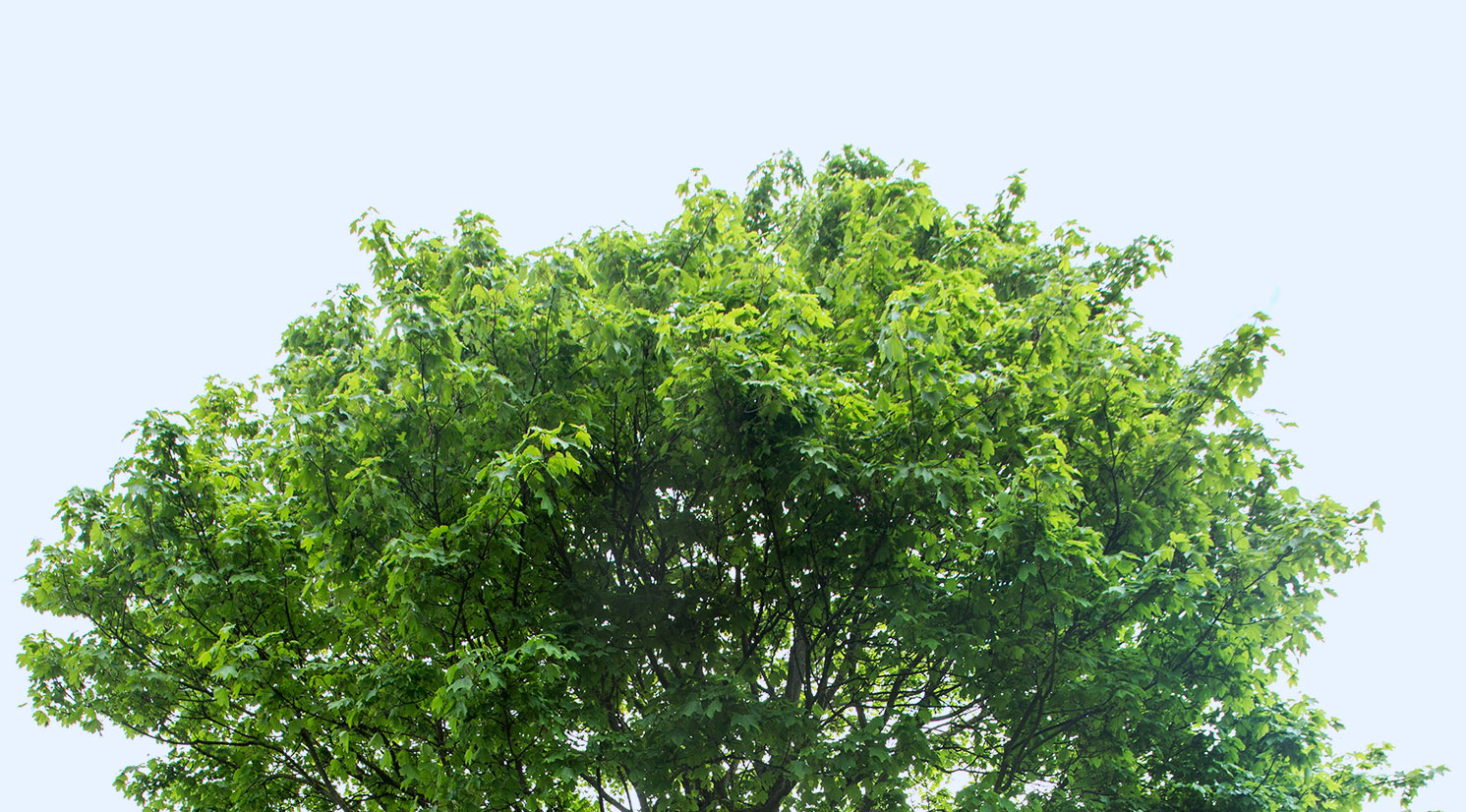Written by Greg Payton, Director of Living Collections
Many people consider spring the best time to plant trees and shrubs, but many types of trees are better planted in late August, September, and October. Fall is ideal because the climate has cooled from the summer’s heat, but the soil is still warm enough to encourage new root development. The combination of warm soil and cool air stimulates root growth. Fall planting gives you one more season for new roots to grow prior to the plants first hot summer. While you can plant trees and shrubs anytime when the soil is not frozen, it is recommended that you do not continue planting trees too late into the fall because this added root growth benefit is lost.
In the Midwest, most of our soil types are heavy and more poorly drained. A tree's root flare should be located at, or slightly above, the soil surface. This root flare is where the roots begin to divide, and I often refer to it as the “shoulders.” Always check for the flare and, if necessary, shave off the top of the root ball until the root flare is exposed. I have seen root flares buried under 6-8” of soil in pots. It is easier for roots to grow down than up!
Other tips to consider:
- If the root ball of your new plant is heavy, do not loosen the soil underneath excessively. The ball should sit where it will not sink, making the root flare sink during eventual settling.
- Mulch should be applied to suppress weed growth and retain moisture. The ideal application is to create a doughnut of sorts with no mulch touching the trunk and forming a ring around the outer portion of the root zone. A problem I see a lot is “volcano mulching” where the mulch is piled high up the trunk. This can cause trunk decay or adventitious roots to develop which wrap around the trunk. As the trunk diameter increases these “girdling roots” can constrict the trunk causing severe damage or entire tree loss.
- Balled and burlapped trees usually have twine tied around the trunk and often have wire cages to keep the soil intact during transport. All twine should be removed, and the wire cut away following placement in the planting hole to avoid the ball breaking apart.
- Less frequent, deep watering is preferable to frequent shallow watering. Trees will become deep-rooted more quickly as they “follow” the water down. When plants are first planted their roots do not extend beyond where they were in the pot. Feel the actual root ball with your fingers (which should be near the surface) and water when it seems to be dry. Overwatering is as damaging as underwatering.
- Staking of trees and tall shrubs. One or two stakes should be utilized following planting when winds can cause a plant to be unsteady in wind-prone areas. A rootball that moves in the soil will not root in effectively. a wrapping system of straps or water hose pieces will protect the trunk from damage. Ensuring a tree’s trunk maintains a vertical habit is ideal from an aesthetic viewpoint.
Please note, some trees will do better when planted in the spring. Trees with fleshy roots, like magnolias, tulip-trees (Liriodendron), and dogwoods (Cornus), do best when planted in the spring. Also, plants with evergreen foliage, like holly (Ilex), boxwood (Buxus) and evergreen rhododendrons are best put out in spring where they will have additional time to establish prior to the winter when drying winds and frozen ground are more likely to cause winter burn on the leave

